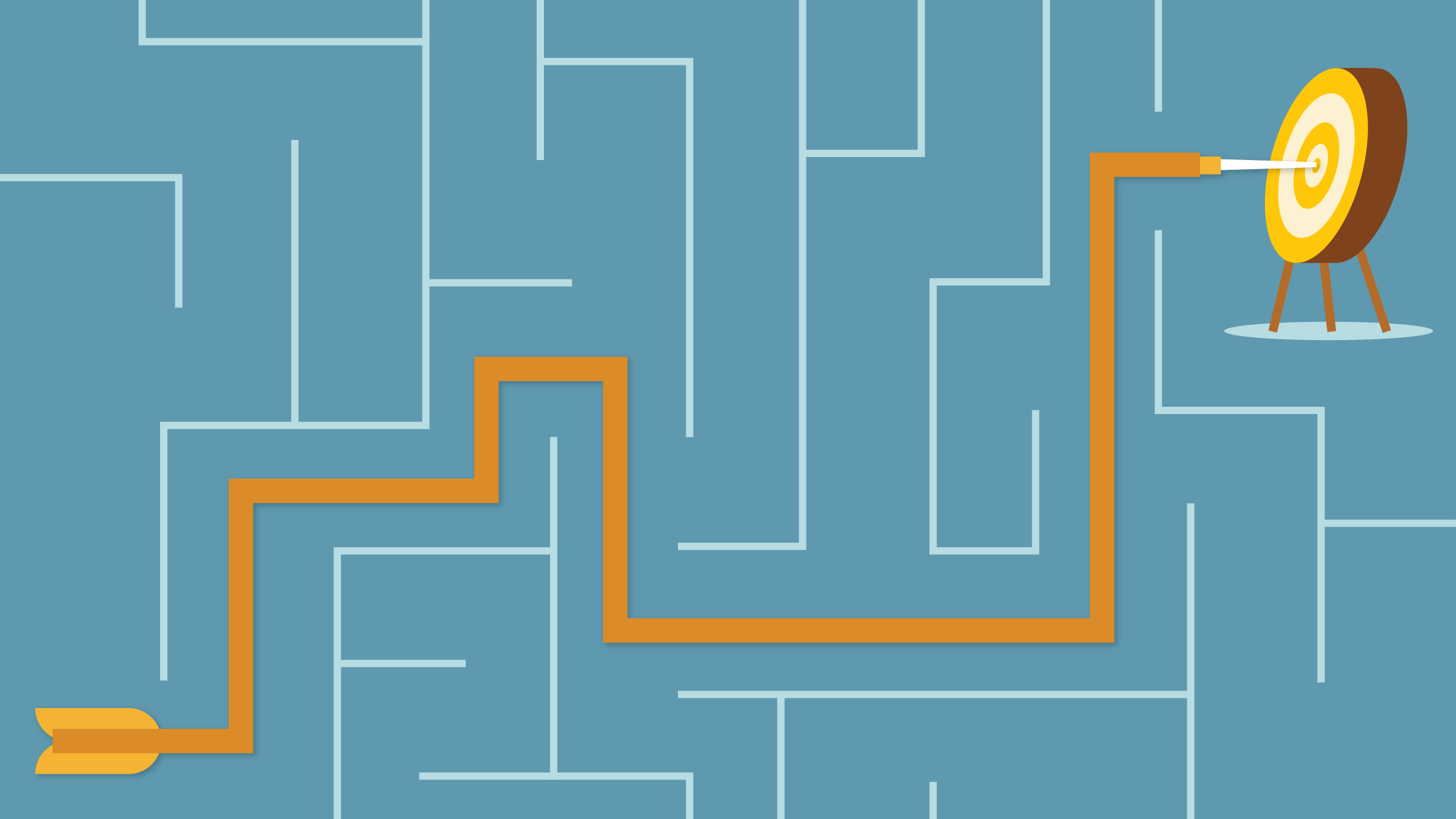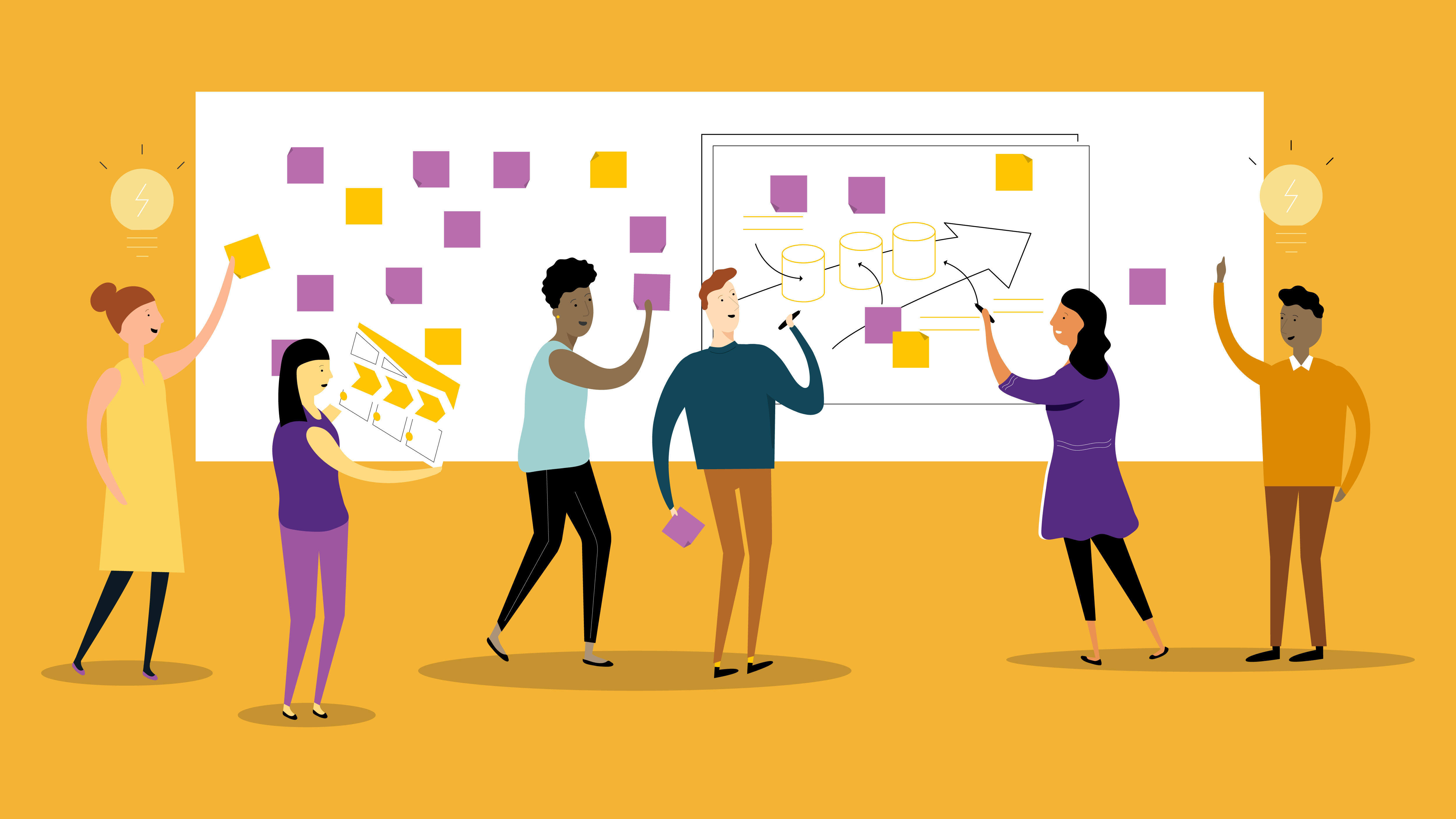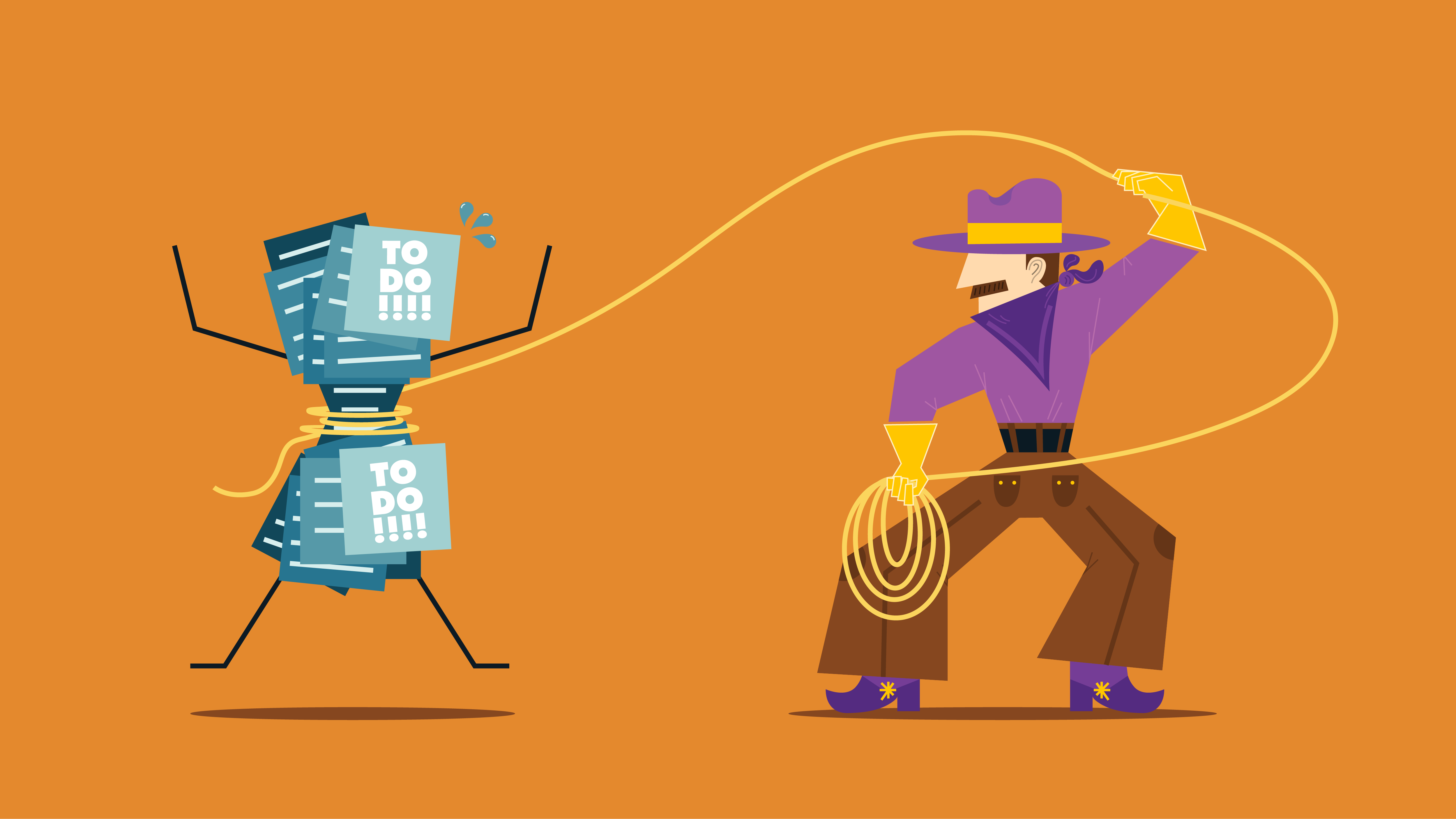Feeling overwhelmed as the coronavirus continues to upend even your best-laid work plans? Not sure where to focus your energy? Create clarity and move forward—despite the tumult—with this simple exercise.
If you’re struggling to adapt to a new way of working or can’t quite pull together a plan of action for tackling your tasks, you’re not alone. A recent study by Thrive Global indicates that of more than 5,000 American workers surveyed, a full 80% feel more distracted since the pandemic began. This holds true across all industries, sectors, and regions.
No wonder it’s tough to get a handle on your mountain of work.
Gain Focus with Start Stop Continue
Fortunately, I work for a company skilled at managing change and pivoting rapidly during times of crisis. This expertise served me well shortly after the pandemic began.
As company bean counter and part of XPLANE’s leadership team, I was asked to walk through a Start Stop Continue exercise shortly after the stay-at-home order was given in Portland, Oregon.
Not familiar with Start Stop Continue? This straightforward exercise helps you understand what you need to do and what you need to stop doing to move forward—something many of us need help with these days.

Start Stop Continue in Action
My task was to use Start Stop Continue to review my current and future projects and determine how these projects help reposition XPLANE to take advantage of new opportunities as well as support a new remote working environment.
To get started, I needed to consider the current situation, brainstorm actions (or projects, in my case), and categorize these projects into one of three “buckets”:
- Start—things I need to START doing
- Stop—things I’m currently doing that I can or should STOP
- Continue—things I’m doing now that work and should CONTINUE
- Pro tip: Start Stop Continue can be done in groups. In this case, invite people to identify and share ideas and, if needed, affinity map—a method for sorting large amounts of data into logical groups using sticky notes—to organize thoughts.
Working alone, I started the exercise by taking inventory of all the projects I was currently working on as well as projects on the horizon. This simple step helped me start to get a sense of which projects to prioritize and which would help support XPLANE’s new remote working environment. Keeping in mind projects that would best help XPLANE reposition itself to (1) take advantage of new opportunities through efficiency gains, (2) provide real-time data to decision makers, and (3) reduce cost, I then put my projects into each of the three buckets.
This helped me see that one project in particular—upgrading XPLANE’s current technology used to support financial reporting and other financial tasks—needed to be continued and more importantly, accelerated. With a prioritized list of projects, I once more turned to Start Stop Continue to lay out arguments in favor of the most important project so I could convince the leadership team into switching XPLANE’s accounting software provider from a desktop program to a SaaS program.
At this juncture, I also realized that I needed to help the leadership team understand why the software switch was time-critical and the steps that needed to happen—from them as well—to make the transition a success. It was at this point that I incorporated XPLANE’s who/do exercise to help me outline what I needed my audience—the leadership team—to do in terms of what they would need to start, stop, or continue as well. I used these two exercises to formulate my arguments and better explain the vision of the new SaaS accounting software and how it would allow XPLANE to better support remote working.
The resulting solutions were simple and straightforward. I had a solid list of arguments that supported what I had determined would be the best software for XPLANE’s new future. My list included improved management access to financial information, reduced accounting software cost, and the ability to implement other software for continued automation and efficiencies.
Take Control of Your Work
While I didn’t end up having any projects that could be stopped, walking through the Start Stop Continue exercise gave me a sense of control and direction. It also helped me see the big picture and how a new SaaS accounting software aligned with XPLANE’s new “normal” and goals in the digital world.
Whether you need to prioritize your work, frame a problem-solving discussion, or brainstorm steps toward a vision, Start Stop Continue can be tremendously helpful.
I will certainly continue to use this handy exercise to assess my projects in the context of helping XPLANE move forward—and I challenge you to do the same at your place of work.
Ready to get started? Download XPLANE’s free Start Stop Continue template. Interested in using this exercise as a starting point to create a road map and action plan for resilience planning or any kind of planning? Check out our blog post by XPLANE CEO Aric Wood, Augment Your Long-Term Strategy With a Near-Term Resilience Plan.

How Design Thinking Can Help You Achieve Strategic Agility
In today’s dynamic world, an effective strategy must keep pace with change. Here’s how you can create all-important strategic agility and reach your goals faster.

Rethinking Customer Centricity in the Post-Pandemic Era
The world has shifted in the past few years, and organizations that wish to remain vital now more than ever must focus on the customer

Strategy Execution Needs Human-Centered Design: Five Steps to Turn Plans into Action
Strategies that are launched with a complex presentation and “cascaded” down the ranks are bound to fail. We no longer live in a world of
